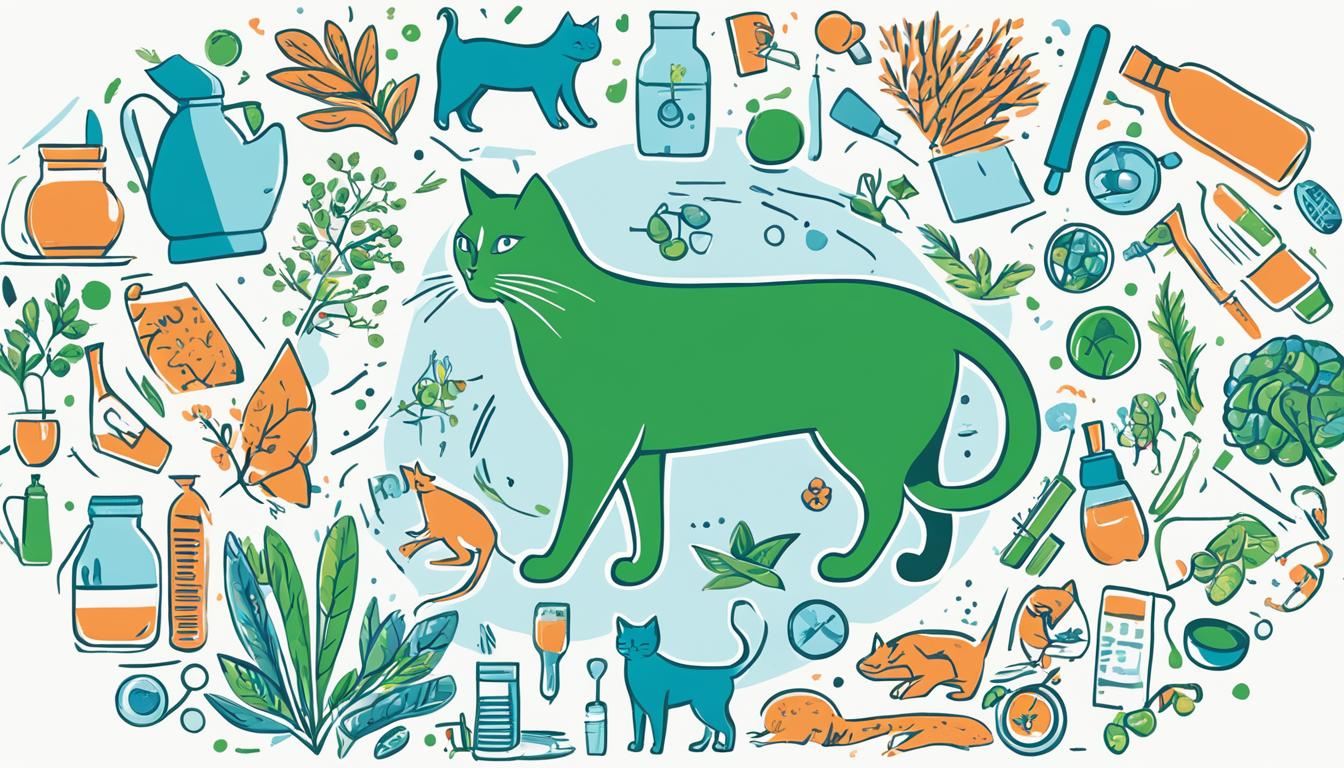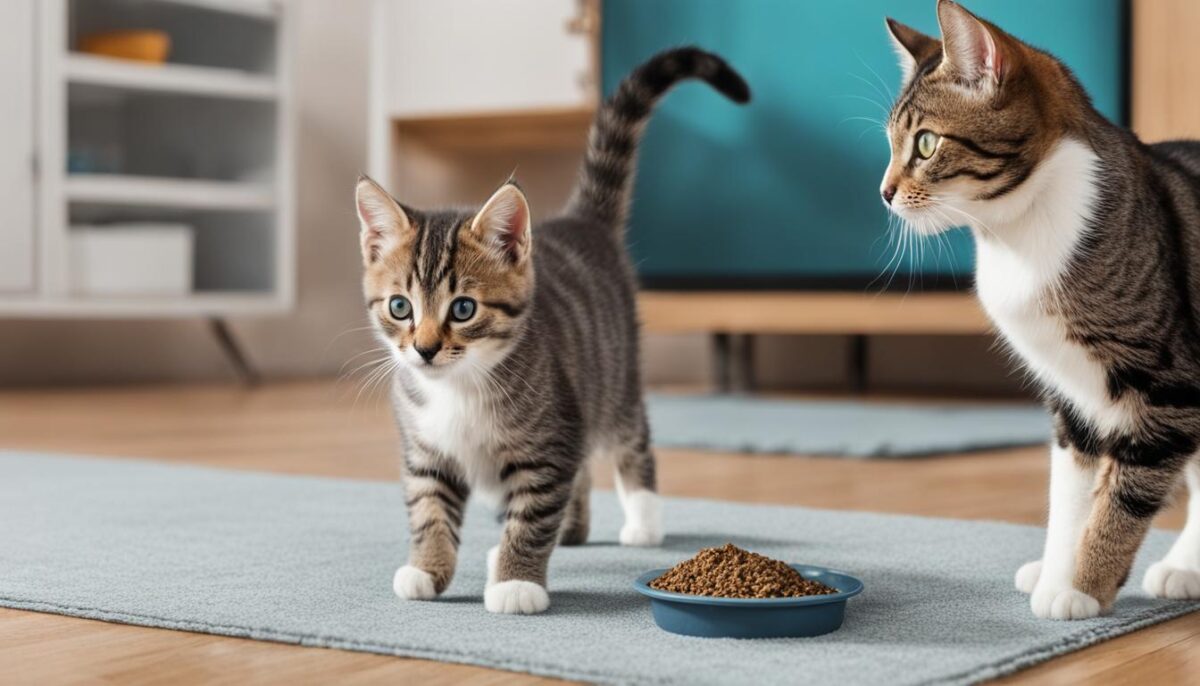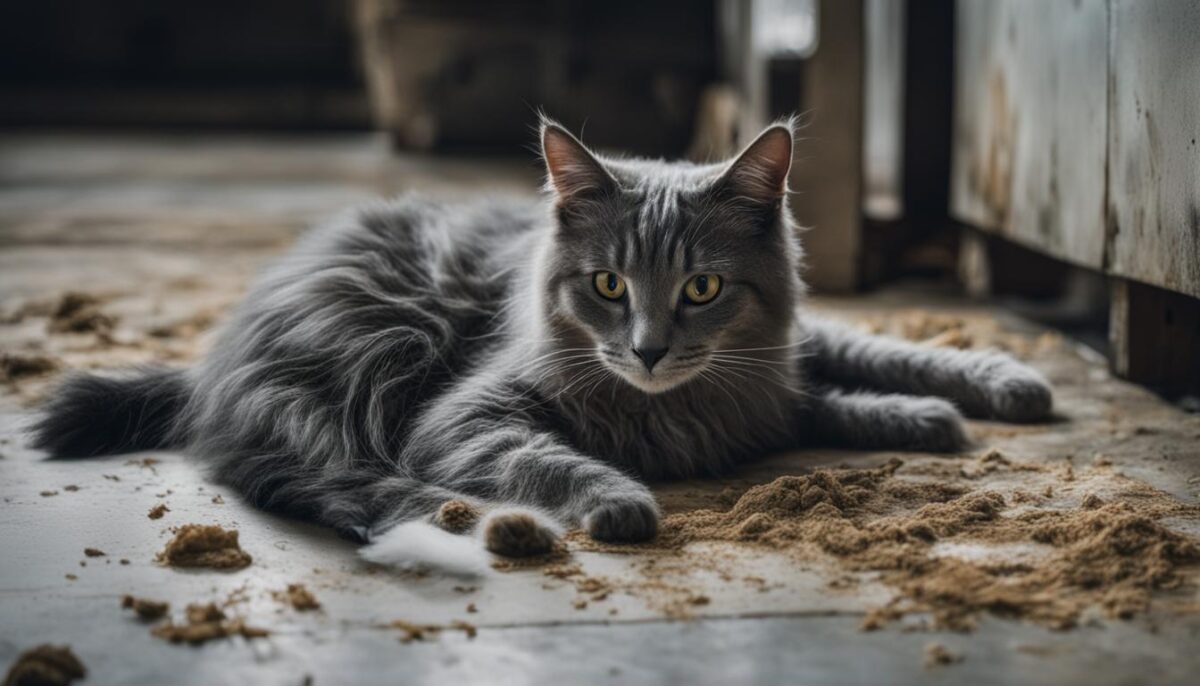If you’re a pet parent, you may worry about keeping your cat healthy. Have you ever heard of something called ‘feline parvovirus’ or ‘FPV’? It’s also known as ‘cat parvo’, and it’s a germ that can make cats very sick, especially little kittens. Just like you need to wash your hands to keep germs away, cats need help to stay away from this one.
FPV is tough; it can be around cats without anyone knowing and then make them poorly. It’s like the flu you can get, but it’s just for cats, and it’s much worse. Cats can catch this virus at any age, but those that are not vaccinated or those who are still growing are more likely to get it. So, taking care of your cat’s health and making sure they’re vaccinated are parts of good pet care.
Key Takeaways
- Feline parvovirus, or FPV, is a germ that makes cats sick.
- It can affect cats of any age, but little kittens need to be extra careful.
- FPV can hurt a cat’s tummy and even their blood, so they need a doctor.
- Vaccines are like special shields that help protect cats from this virus.
- Taking care of your cat with regular doctor visits is the best way to keep them strong and healthy.
What Is Feline Panleukopenia?
Feline panleukopenia is a word that might sound really complicated, but you can think of it as a tough cat sickness that’s kind of like the flu. Just like you can catch the flu and feel really yucky, cats can catch this too. Feline panleukopenia is also called feline infectious enteritis and it is super serious for cats, especially little kittens.
Imagine, there are these tiny things called viruses that you can’t even see with your eyes, and one of them can make cats really sick. That’s what happens with feline panleukopenia. It makes it hard for cats to fight off other sicknesses and can upset their tummies a lot.
Now, if you hear someone talking about feline parvo basics, they’re talking about this same cat sickness, just using another name for it. People also call it feline distemper, but don’t mix it up with dog distemper—they’re not the same!
Basics of Feline Parvovirus
When a cat gets this virus, it’s like they catch a bug that makes their tummy and blood cells feel all sorts of bad. The virus goes after the parts of their body that make them strong and able to eat without getting sick. That’s why it’s a big deal and not just a regular kitty cold.
Demystifying Feline Distemper
Remember how we talked about feline distemper? It’s just another name for feline panleukopenia. It can make cats feel sad, get a really high fever, and have troubles with their digestion. If you see a cat not acting like its normal playful self, it could be a sign of this.
How FPV Affects Cats’ Cells
Inside every cat are tiny building blocks called cells. When the feline panleukopenia virus gets inside, it breaks these tiny blocks, especially in places like their bone marrow and intestines. That means the cat’s body has a harder time keeping them healthy and safe from other sick bugs.
It’s really, really important for cats to see their vet and get their shots so they can stay healthy and not get feline panleukopenia. If people make sure their pet cats are vaccinated, they’re helping them have a happy life with lots of play and cuddles!
Can Cats Get Parvo?
Hey there, have you ever wondered if your purring pal can catch parvo? Well, FPV infection, also called parvo in cats, is something that can indeed happen to our feline friends. This nasty bug is not the same as the one dogs get, but it’s still really contagious and can make cats very sick.
The little ones, our kittens, and cats that have not gotten their shots can get hit the hardest by this. So, what can you to do help keep your cat safe and healthy? Getting them vaccinated is super important. This is a big step in feline parvo prevention, and it’s the best way to keep them from catching this virus.
Check out the table below to see how you can keep your cat protected from FPV:
| Action | Benefit |
|---|---|
| Vaccinations | Protects against FPV |
| Regular Vet Visits | Early detection if sick |
| Keeping Indoors | Less chance to catch viruses |
| Clean Environment | Reduces risk of FPV spread |
Remember, our fluffy buddies count on us to look out for them, so let’s make sure they’re up-to-date on their shots and living in a nice, clean home. Together, we can help shield them from getting an FPV infection.
The Risks and Susceptibility of Cats to FPV
Feline parvo, also known as feline panleukopenia virus, is a tricky bug. You might have heard it’s bad news for kittens, and you’re right—kittens and cats without their shots are at higher risk. But what exactly makes some cats more likely to get sick from this virus, and why should you be careful when it’s warm outside? Let’s take a look.
Understanding High-Risk Groups
Imagine a superhero without a shield—that’s kind of like a tiny kitten trying to fight off feline parvo. Kittens just don’t have the strong defenses that older cats have. And if a cat hasn’t gotten its vaccines, it’s like going into a rainstorm without an umbrella—unvaccinated cats can easily get drenched by the virus. Also, cats that are already dealing with other health boo-boos are susceptible cats because they can’t fight as well.
Environmental Factors Contributing to FPV Spread
Be aware, feline parvo is one tough cookie—it can hang around for a long time, even without a cat to live in. It’s found in places lots of cats call home, like animal shelters and even your neighborhood. When it gets warm, the virus can throw a really big party, meaning more kittens might get sick. If a place has many cats living close together, it’s like a big concert for the virus to spread to everyone. Keeping things clean and giving sick cats their own space to get better is super important to stop the virus from spreading.
Here’s a quick look at some of the places you need to watch out for where this cheeky virus likes to hide:
| Places | Risk Level | Why It’s Risky |
|---|---|---|
| Animal Shelters | High | Lots of cats close together |
| Your Street | Moderate | Stray cats might carry the virus |
| Kennels | High | Cats mixing from different places |
| Parks | Low | Outdoor space, but watch out around many cats |
So now you know, young kitties and their friends without superhero vaccines need you to keep an eye on them. Make sure they stay away from this invisible enemy by getting their shots and keeping their home nice and clean. That way, you’re helping them to stay as mighty as superheroes!
Recognizing and Diagnosing Parvo in Cats
Feline Parvo, also known as feline panleukopenia, is a tough one for our furry friends. It’s a sneaky bug that can make your cat feel really bad. If you know what signs to look for, you can help your cuddly kitty stay healthy!
Common Symptoms of Feline Parvo
Have you ever felt so tired you didn’t want to play? Well, cats with feline parvo can feel like that too. They may not want to eat and they might throw up or have diarrhea. Sometimes, they can run a fever or just seem really out of it. If your cat acts like this, it’s time for a trip to the vet.
The Importance of Early Detection
When it comes to FPV diagnosis, the faster you figure it out, the better. Cats are good at hiding when they don’t feel well, so keep an eye on things like how much they’re eating and if they’re playing less.
Here’s a table to show you some of the things you might see if a kitty has parvo:
| Signs of Parvo | What You Might See |
|---|---|
| Lethargy | Cat is less playful and sleeps more than usual |
| Loss of Appetite | Not eating, even their favorite treats |
| Vomiting | Throwing up food or bile |
| Diarrhea | Having a very upset tummy |
| Fever | Warmer than usual to the touch |
| Dehydration | Seems very thirsty or has dry, sticky gums |
Remember, catching feline parvo symptoms early is like finding the little monster under the bed before it gets too big. Pet parents, talk with your vet about the right tests to help your kitty feel pawsome again!
Conclusion
Feline parvo is a tough sickness that can really hurt your cat, especially if they are little kittens. To keep your cat safe, you need to know about this disease, be able to spot when your cat is not feeling well, and understand why shots to prevent the disease and quick help from a vet are so important. Cats mean a lot to us, and taking care of their health is big part of loving them. Feline parvovirus might sound scary because it can make cats very sick, or even be deadly, but don’t worry too much. If you take the right steps and pay attention to your cat’s health care, you can do a lot to keep them happy and healthy.
Remember that if your cat gets their shots and you watch out for any signs of sickness, you’re doing a great job in protecting them from feline parvo. Quick action to get help can make all the difference. Anytime your cat seems sick, talking to your vet fast can help your cat feel better sooner. We all want good news when it comes to our pet’s health, and while FPV can be a serious thing, with your careful watch and some help from the vet, your cat can enjoy a wonderful life by your side.
So, you’ve done great in learning all about feline parvo! By understanding this information, you’re set to give your cat the best care. Keep loving and looking after your cat, and they will be purring with joy thanks to your great care. Together, we can make sure that our feline friends stay healthy and avoid the troubles that come with FPV.
FAQ
Can cats get parvo just like dogs?
Yes, cats can get parvo, but it is a different virus from the one that infects dogs. The feline parvovirus, also known as feline panleukopenia or FPV, is a highly contagious viral illness specific to cats and cannot be contracted from dogs.
What is feline panleukopenia?
Feline panleukopenia, also known as feline distemper or feline parvo, is a severe viral disease that affects cats. It targets and destroys cells in the bone marrow and intestines, leading to a compromised immune system and gastrointestinal issues.
How does FPV affect a cat’s cells and overall health?
FPV primarily impacts cells that rapidly divide, such as those in the intestines and bone marrow, causing a reduction in both white and red blood cells. This destruction weakens the cat’s immune system, making it harder to fight off infections and leading to severe health complications.
What cats are at the highest risk for contracting FPV?
Kittens, unvaccinated cats, and cats with underlying health conditions are at the highest risk for contracting FPV. The virus can be especially severe in young kittens between 3 to 5 months old.
How does the environment contribute to the spread of FPV?
FPV can survive in the environment for up to a year and can be spread through contaminated surfaces, objects, or by direct contact with infected animals. High-density living areas, like shelters and multi-cat homes, can increase the risk of FPV outbreaks.
What are the common symptoms of feline parvo?
Symptoms of feline parvo may include lethargy, loss of appetite, high fever, vomiting, diarrhea, and dehydration. Severity can vary, with some cats experiencing mild symptoms and others becoming fatally ill.
Why is early detection of FPV important?
Early detection of FPV is crucial because it can significantly improve a cat’s chances of survival. Immediate veterinary care can help manage symptoms and prevent the virus from spreading to other felines.


